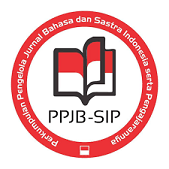Teknik Penguatan dalam Pembelajaran Menulis di Kelas X IPB MAN Patas Kecamatan Grokgak
DOI:
https://doi.org/10.23887/jjpbs.v6i1.9684Abstract
Penelitian ini bertujuan untuk mendeskripsikan (1) teknik-teknik penguatan yang diterapkan guru dalam pembelajaran menulis (2) respons siswa setelah guru memberikan penguatan dalam pembelajaran menulis, dan (3) kendala-kendala yang dialami guru guru memberikan penguatan dalam pembelajaran tersebut. Penelitian ini menggunakan rancangan penelitian deskriptif kualitatif. Subjek penelitian ini adalah guru bahasa Indonesia kelas X IPB MAN Patas, kecamatan Grokgak. Objek penelitian ini adalah teknik penguatan guru dalam pembelajaran menulis, respons siswa setelah guru melakukan penguatan, dan kendala dalam menggunakan teknik penguatan tersebut. Metode pengumpulan data yang digunakan adalah metode observasi, perekaman, dan wawancara. Metode analisis data pada penelitian ini mencakup yaitu 1) identifikasi data, 2) klasifikasi data, 3) penyajian data, dan 4) verifikasi dan penarikan simpulan. Hasil penelitian ini menunjukkan bahwa (1) teknik penguatan yang ditampilkan dan dilakukan guru sudah bervariasi terlihat dari sudah adanya teknik penguatan yang digunakan guru, (2) respons siswa setelah guru memberikan teknik penguatan, yaitu (a) respons verbal,yang berupa ucapan “terima kasih” (b) respons nonverbal, yang berupa senyuman, dan anggukan kepala (3) Kendala-kendala yang dihadapi guru bersumber dari faktor guru, siswa, sarana dan prasarana, lingkungan khususnya dalam pengorganisasian kelas.Kata Kunci : teknik penguatan, menulis, verbal, non-verbal
This study aimed to describe (1) the teknique of reinforcement are applied teacher in writing (2) a student's response after the teacher provide reinforcement in learning to write, and (3) the constraints experienced teachers provide reinforcement teacher in the learning. This research uses descriptive qualitative research design. The subjects were Indonesian teachers in class X MAN IPB Patas, sub Grokgak. The object of this study is the technique Strengthening teacher in writing class, a student's response after strengthening teacher, and constraints in using the reinforcement techniques. Data collection method used is the method of observation recording, and interviews. Methods of data analysis in this study include: 1)identification of the data, 2) classification of data, 3) data, and 4) verification and drawing conclusions The results of this study indicate that (1) strengthening techniques shown and do teachers have varied looks of own implementation of the components of reinforcement techniques, (2) the students' responses after the teacher provides reinforcement techniques, namely (a) response to verbal, students meespon answered with said "thank you thump" when given reinforcement by the teacher. (B) nonverbal responses, in the form of a smile and a nod of the head (3) Constraints faced by teachers sourced from a factor of teachers, students, facilities and infrastructure, especially in the organization of the classroom environment
keyword : reinforcement techniques, writing. Verbal, non verbal
Published
2017-03-02
Issue
Section
Articles
License
Authors who publish with the Jurnal Pendidikan Bahasa dan Sastra Indonesia Undiksha agree to the following terms:- Authors retain copyright and grant the journal the right of first publication with the work simultaneously licensed under a Creative Commons Attribution License (CC BY-SA 4.0) that allows others to share the work with an acknowledgment of the work's authorship and initial publication in this journal
- Authors are able to enter into separate, additional contractual arrangements for the non-exclusive distribution of the journal's published version of the work (e.g., post it to an institutional repository or publish it in a book), with an acknowledgment of its initial publication in this journal.
- Authors are permitted and encouraged to post their work online (e.g., in institutional repositories or on their website) prior to and during the submission process, as it can lead to productive exchanges, as well as earlier and greater citation of published work. (See The Effect of Open Access)







